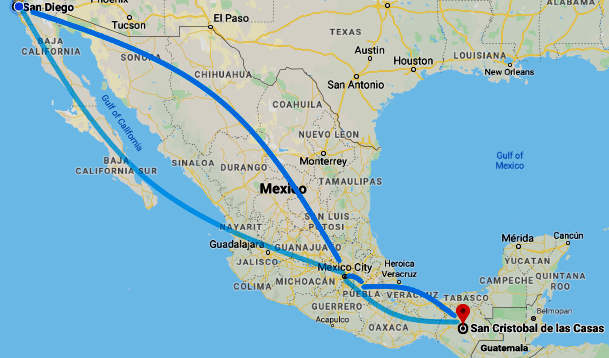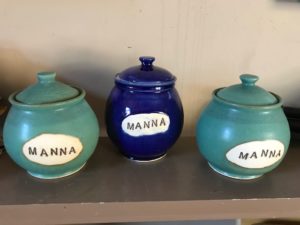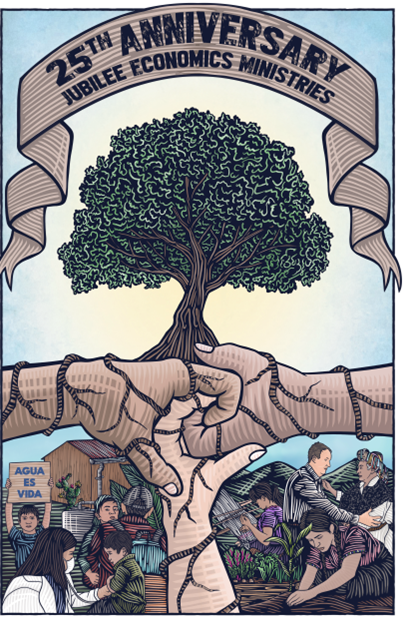OneEarth Jubilee
Climate Clock
The stark truth of the clock helps us feel the necessity to act NOW. It could be that the clock has given us more time than we have because 2024 was the first year that global warming exceeded 1.5°C. Nonetheless, our moral and spiritual commitment requires us to do what is right for Earth and Life.
Actions:
- Click on upper right bar of the clock.
- See the OneEarth Jubilee Covenant.
What is OneEarth Jubilee?
In 2000, a group of us began a nonprofit, 501(c)3, organization, inspired to action after reading the book by Ross and Gloria Kinsler, The Biblical Jubilee and the Struggle for Life. The influence of Latin America has been integral from our start, and today we are focused in four Jubilee Circles, one in the U.S., three in Mexico—San Diego, California; San Cristobal, Chiapas; Tapachula, Chiapas; San Mateo, Puebla.
We also join in ministry with Simple Living Works and Faith & Money Network.
“We have a profound personal commitment to Jubilee Economics Ministries, (JEM). It was conceived and delivered in our home in Chicago, a community we shared with Lee and Juanita Mangan-VanHam. Following it’s growth and development through the ensuing years has been exciting. As JEM continues to mature and expand, especially in Mexico, we are provided with a concrete example of how we can work together across economic, social, and cultural boundaries which sometimes feel impenetrable. We are learning together how to live a fulfilling life on one earth.”
— Grace and Tom Gyori

We Invite You to Sign the OneEarth Jubilee Covenant
The covenant practice we’re currently emphasizing: Our Food Choices.
Here’s a link directly to a pdf guide for this practice.
OneEarth Jubilee—Transforming Way to Live
Today the dominant ways of living exceed the resources of our planet—a full 1.7 planets is required. Let’s call it MultiEarth! The natural world is raging against these excesses. We call them “natural disasters” and thus escape taking responsibility for the evils of MultiEarth living.
A transforming spiritual response to MultiEarth’s illusions of living beyond the planet’s capacities is living with them—OneEarth living. Committing to OneEarth wisdom shapes life according to how creation functions—interdependence of all beings and sufficient abundance for all within creation. Jesus lived by this worldview (Luke 4:18-19) and called us out (ekklesia) of the MultiEarth worldview of autocracies and superpowers, calling us to follow his way instead.
What We Do
Our work is primarily three-fold: (1) Education, (2) Reaching out to others to be part of the OneEarth Jubilee movement, and (3) Organizing activities.
The work emanating from our Jubilee Circles is described in a small 64-page book entitled simply, Jubilee Circles: Help Save Life on the Planet. It is available in English and Spanish.
More specifically, our actions include:
- Empowering women in Mexico so they can generate income
- Tutoring and teaching children and parents
- Delivering medical services and healthcare
- Demystifying laws used to oppress and teaching rights
- Creating monthly episodes for the Simpler OneEarth Living podcast
- Write books
- Give workshops and presentations in congregations and on campuses
- Organize OneEarth Travel Seminars from the U.S. to Mexico
We see abundance where others see scarcity and austerity. We see promise and vitality in the bounty of living within the limits of what economic activity can be done on One Earth, rather than living as if there were many earths to do our business.
The Manna Jar—Strong Symbol of Creation-Based Economy of Enough
 The Manna Jar is a core symbol of Jubilee Economics because it comes from a story when people learned to live creation-based lives instead of empire-based lives (see Exodus 16). The story of manna in the wilderness is not about the miracle of some kind of bread showing up mysteriously every morning— as commonly taught. It is far more radical. It presents conversion from using more than our share to sharing in common. Conversion from thinking that making astute economics decisions to get more money and more power are most important, to economic thinking of enough for all living beings, and living within our planet’s abundance. The manna story puts spiritual Presence at the heart of daily economic practice, which is to say, there is a spiritual energy at work in the universe to provide life for all beings when we live a creation-based economy and paradigm.
The Manna Jar is a core symbol of Jubilee Economics because it comes from a story when people learned to live creation-based lives instead of empire-based lives (see Exodus 16). The story of manna in the wilderness is not about the miracle of some kind of bread showing up mysteriously every morning— as commonly taught. It is far more radical. It presents conversion from using more than our share to sharing in common. Conversion from thinking that making astute economics decisions to get more money and more power are most important, to economic thinking of enough for all living beings, and living within our planet’s abundance. The manna story puts spiritual Presence at the heart of daily economic practice, which is to say, there is a spiritual energy at work in the universe to provide life for all beings when we live a creation-based economy and paradigm.
So looking at the Manna Jar, how do we answer questions like: How can we survive without industrial agriculture? How can we live apart from the urban environments where resources and power are centered? What does creation-centered living look like? Is it living in perpetual scarcity and austerity? Is there ever abundance? How can we live with enough when the economy aiming for endless growth shapes us for more? Does greed really have to sabotage caring and sharing?
(You can get a Manna Jar for $30 plus shipping.)
Click to read an article by Paul Taylor and Lee Van Ham, “How Much Is Enough? The Living Symbol of the Manna Jar,” published in the May 2020 newsletter of Faith and Money Network, Washington, D.C.
